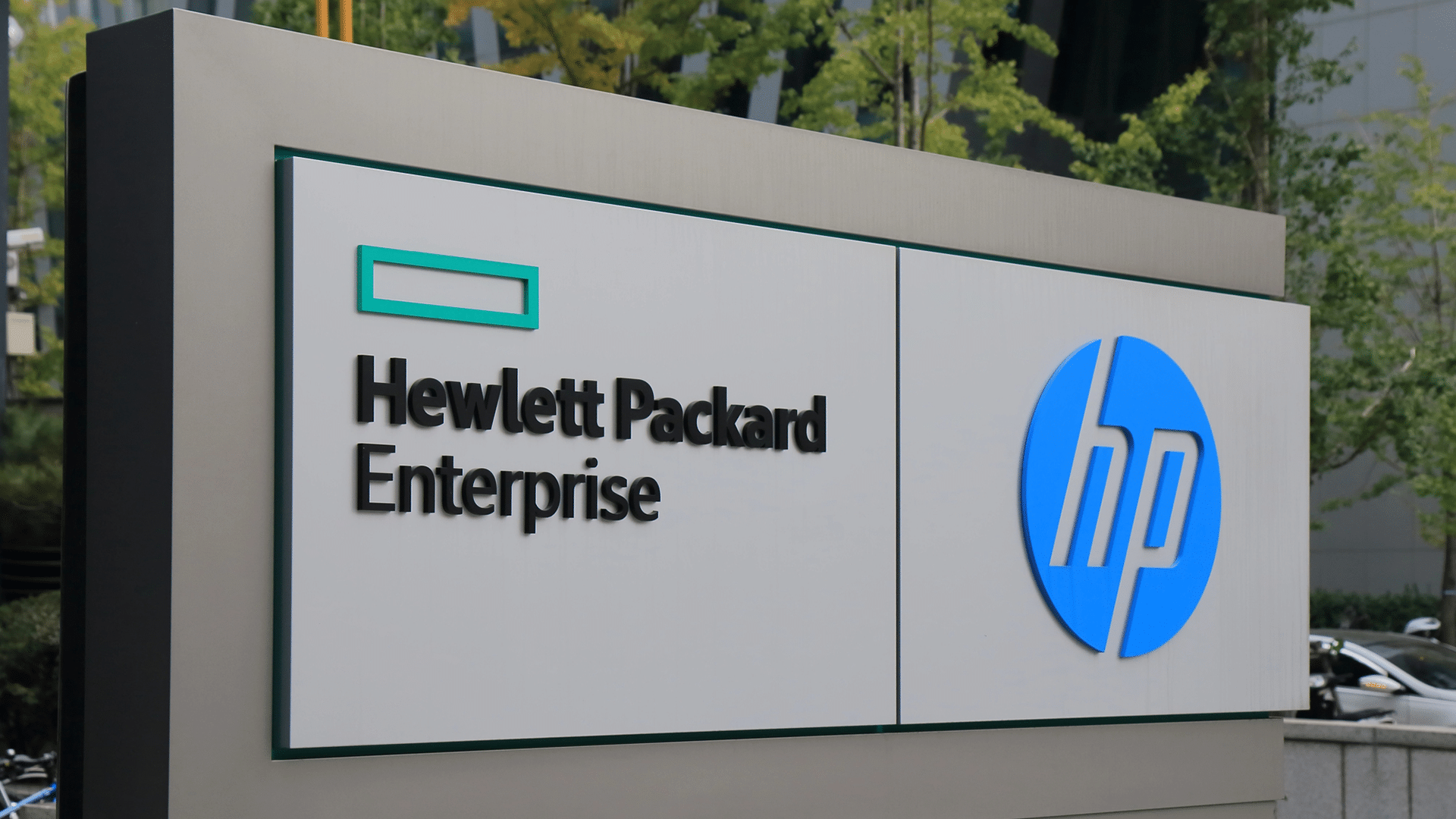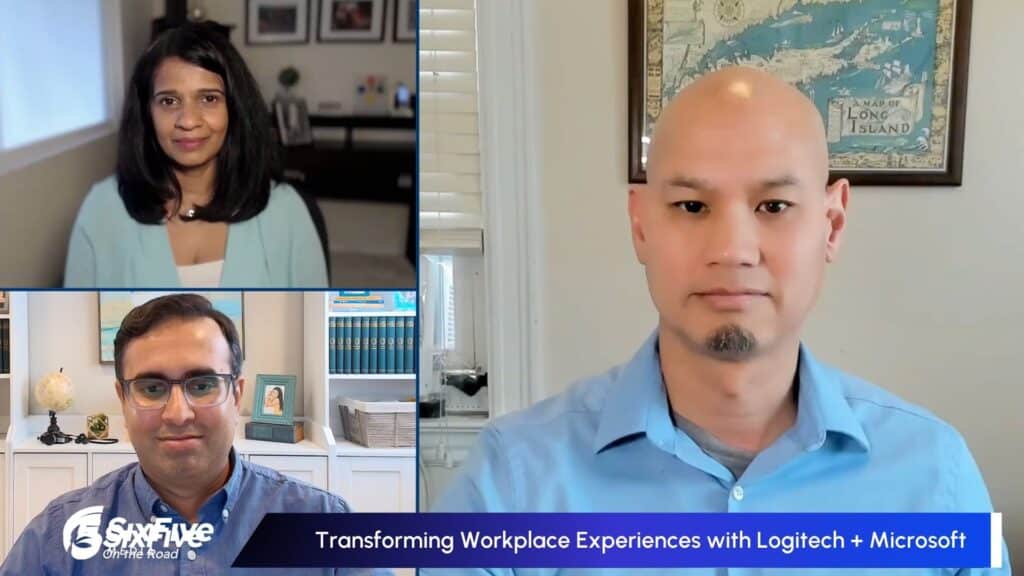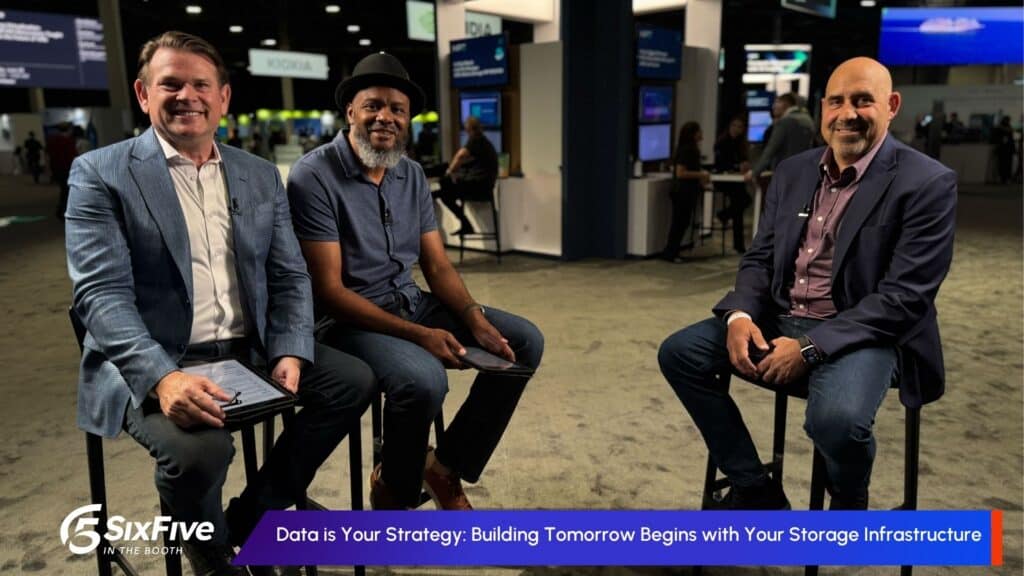Analyst(s): Ron Westfall, Daniel Newman
Publication Date: March 10, 2025
HPE’s Q1 FY 2025 earnings report highlights strong momentum in its server and hybrid cloud businesses, driven by enterprise demand and AI infrastructure growth. However, declining margins and ongoing cost pressures weighed on profitability, prompting strategic cost-cutting measures.
What is Covered in this Article:
- HPE’s Q1 FY 2025 financial results
- Server growth is strong, but margins are under pressure from pricing and inventory challenges.
- Hybrid Cloud and GreenLake continue to expand, driven by enterprise demand.
- The Juniper deal faces DOJ opposition. The trial is set for July 9, and $450 million in synergies are at stake.
- Weak FY 2025 guidance; Q2 FY 2025 revenue and EPS outlook below expectations
The News: Hewlett Packard Enterprise (NYSE: HPE) reported Q1 FY 2025 revenue of $7.85 billion, up 16% year-on-year (YoY) and slightly ahead of the $7.81 billion consensus estimate. Server revenue climbed 29% YoY to $4.3 billion, while Hybrid Cloud revenue increased 10% YoY to $1.4 billion. In contrast, Intelligent Edge revenue declined 5% YoY to $1.1 billion, and Financial Services revenue remained flat at $873 million. HPE’s non-GAAP gross profit margin fell to 29.4%, below the 31.3% consensus estimate and down from 36.2% YoY. Non-GAAP operating profit margin declined to 9.9% (versus 10.1% expected), compared to 11.5% in the prior year. Non-GAAP operating income reached $780 million, edging up from $775 million in Q1 FY 2024. Non-GAAP diluted earnings per share (EPS) stood at $0.49, marking a 2% YoY increase, in line with guidance and just shy of the $0.50 consensus estimate.
“We took actions in the quarter to streamline costs, which helped us offset other impacts to profitability,” said Marie Myers, executive vice president and CFO of Hewlett Packard Enterprise. We continue to align our strategy and execution with long-term growth trends that will fuel our performance.”
HPE Q1 FY 2025: Server Boom Fuels Revenue Jump, But Margins Pressured
Analyst Take: HPE delivered a solid Q1 FY 2025, posting 17% year-over-year (YoY) revenue growth at constant currency and an impressive 46% surge in Annualized Revenue Run-Rate (ARR) – a clear indicator of sustained demand for its AI and cloud solutions. However, the company’s weak Q2 FY 2025 guidance rattled investors, with both revenue and EPS projections falling short of expectations. This raised concerns over short-term softness in AI server demand and broader macroeconomic challenges. In an effort to streamline operations and mitigate these pressures, HPE also announced a 3,000-job reduction, further contributing to market uncertainty.
AI Server Growth Continues, But Transition Creates Margin Pressure
HPE’s server revenue jumped 29% YoY (30% in constant currency) to $4.3 billion, driven largely by sustained AI demand and strong uptake of Gen11 compute systems. AI system revenue more than doubled YoY, reaching $900 million, though it declined sequentially due to chip availability issues and customer readiness delays. The company added $1.6 billion in new AI system orders, bringing total AI-related bookings to an impressive $8.3 billion.
Despite this top-line growth, server operating margins fell to 8.1% – significantly below the 10%-11% target range and down from 11.4% YoY. This margin compression stemmed from aggressive discounting and higher-than-anticipated AI inventory levels. CEO Antonio Neri acknowledged that execution in AI servers could have been better, citing supply chain transitions and a rapid industry shift to next-generation GPUs as key challenges.
Management pointed to shifting customer demand as a major factor. Service providers and AI model builders are quickly adopting Blackwell GPUs, while enterprise and sovereign AI customers are taking a more gradual approach, still relying on previous-generation chips. This slower consumption cycle has contributed to elevated AI inventory levels, which HPE expects will normalize over the next one to two quarters, with margin recovery anticipated in the H2 FY 2025.
On the innovation front, HPE shipped its first NVIDIA GB200 systems during the quarter, marking an important step in its AI strategy. Additionally, the company launched its ProLiant Gen12 server platform, featuring next-generation iLO quantum-resistant security and direct liquid cooling (DLC). The Gen12 servers promise substantial efficiency gains – one Gen12 server can replace up to 26 Gen9 servers or 14 Gen10 servers, reducing power consumption by at least 65%.
From our view, HPE is strengthening its competitive position in the supercomputing and DLC market segments by developing AI systems that can achieve up to 90% reduction in cooling power consumption in relation to traditional air-cooling systems, to deliver efficiency, sustainability, and performance gains across the most demanding AI workload environments.
Hybrid Cloud and GreenLake Remain Strong Pillars for Growth
HPE’s Hybrid Cloud revenue climbed 10% YoY to $1.4 billion, fueled by triple-digit growth in Alletra Storage MP orders, which now account for over half of all IP block product orders. This highlights a broader industry shift toward disaggregated storage models as enterprises scale AI and data workloads.
The company’s GreenLake platform remains a strong growth driver, with ARR surpassing $2.1 billion – a 46% YoY increase in constant currency. The platform’s customer base expanded significantly, reaching 41,000, up from 31,000 in the prior period. As businesses embrace pay-as-you-go IT consumption models, GreenLake captures a larger share of hybrid cloud and AI infrastructure spending.
Further strengthening its cloud portfolio, HPE introduced VM Essentials, a cost-effective alternative to VMware aimed at hybrid cloud orchestration and on-prem virtualization. With hundreds of customers currently in trials, this solution aligns with HPE’s broader hybrid cloud strategy, further reinforcing its GreenLake ecosystem.
MWC25: Key Takeaways
From our view, HPE adeptly demonstrated why The HPE Aruba Networking CX 8325P switch delivers embedding precision timing into the network fabric, key to delivering nanosecond accuracy for mission-critical capabilities such as improved quality of calls, data transactions, and AI workloads between moving cellular traffic.
HPE and T-Mobile have joined forces to deliver an enterprise-grade networking solution for small businesses (SB) designed to deliver management ease and security at an affordable price. We see this collaboration as introducing a subscription solution that combines the T-Mobile Connected Workspace Program, including the Managed 5G Gateway service with HPE Networking Instant On Switch Series 1830 and HPE Networking Instant On Access Point AP21, taking advantage of increasing SB demand for ease of adoption 5G connectivity solutions.
Also announced and displayed at the event was the HPE ProLiant Compute DL110 Gen12, HPE’s next-generation server based on Intel’s new Xeon 6 Granite Rapids-D chipset. Built specifically for telco deployments at the far edge of networks, the new HPE ProLiant Compute DL110 combines compute, thermal performance, and IO density. We find that HPE’s prioritization of integrating next-level security by using multi-layer security features such as quantum-resistant cryptographic readiness and Secure Envclave capabilities fully aligns with the rapid expansion of hybrid AI, including greater execution of AI inferencing demands at the network edge. The HPE ProLiant Compute DL110 expands the performance, reliability, and scalability required for Open RAN deployments. It illustrates HPE’s commitment to providing telco customers with the ability to modernize their networks with the equipment that best suits their needs.
Intelligent Edge Slows, Juniper Deal Faces Uncertainty
HPE’s Intelligent Edge revenue dipped 5% YoY to $1.1 billion, reflecting weaker federal spending and a normalization of post-pandemic backlogs. However, on a sequential basis, the segment grew 2%, marking its third consecutive quarter of improvement. Encouragingly, SASE and data center switching saw double-digit YoY growth, while wireless LAN and campus switching experienced strong order momentum, highlighting enterprise demand for network upgrades.
Meanwhile, HPE’s $14 billion acquisition of Juniper Networks remains under scrutiny. The DOJ has moved to block the deal on antitrust grounds, creating uncertainty about its completion. HPE is actively contesting this, arguing that the merger would increase competition, drive innovation, and enhance U.S. networking infrastructure. The trial is set for July 9, and HPE remains optimistic about closing the transaction by year-end, targeting $450 million in synergies over three years.
Market Outlook: Soft Guidance Signals Near-Term Margin Pressures
For FY 2025, HPE forecasts 7%-11% revenue growth YoY, with non-GAAP operating profit expected to range from flat to -10%. Non-GAAP diluted net EPS is projected between $1.70 and $1.90.For Q2 FY 2025, HPE expects revenue of $7.2 billion to $7.6 billion – below consensus expectations of $7.9 billion. Similarly, non-GAAP diluted EPS is projected at $0.28-$0.34, significantly below the consensus estimate of $0.48. This weaker near-term outlook reflects ongoing server margin pressures, geopolitical risks from tariffs, and restructuring costs, including planned workforce reductions aimed at generating $350 million in savings by FY 2027.
Despite these short-term challenges, HPE remains focused on AI infrastructure, hybrid cloud, and GreenLake expansion as its core long-term growth drivers. Investors will be closely watching AI server execution improvements, cost-saving realization, and the outcome of the Juniper antitrust trial as key indicators of HPE’s ability to stabilize margins and sustain growth momentum.
See the complete HPE Q1 FY 2025 earnings press release on the HPE website.
Daniel Newman and his co-host of The Six Five Webcast, Patrick Moorhead of Moor Insights and Strategy discusses HPE’s earnings in their latest episode. Check it out here and be sure to subscribe to The Six Five Webcast so you never miss an episode.
Disclosure: The Futurum Group is a research and advisory firm that engages or has engaged in research, analysis, and advisory services with many technology companies, including those mentioned in this article. The author does not hold any equity positions with any company mentioned in this article.
Analysis and opinions expressed herein are specific to the analyst individually and data and other information that might have been provided for validation, not those of The Futurum Group as a whole.
Other insights from The Futurum Group:
DOJ Blocks HPE’s $14 billion Juniper Deal – A Competitive Setback or Market Win?
Will HPE’s Cooling Revolution Truly Redefine AI Infrastructure Efficiency?
Author Information
Ron is an experienced, customer-focused research expert and analyst, with over 20 years of experience in the digital and IT transformation markets, working with businesses to drive consistent revenue and sales growth.
He is a recognized authority at tracking the evolution of and identifying the key disruptive trends within the service enablement ecosystem, including a wide range of topics across software and services, infrastructure, 5G communications, Internet of Things (IoT), Artificial Intelligence (AI), analytics, security, cloud computing, revenue management, and regulatory issues.
Prior to his work with The Futurum Group, Ron worked with GlobalData Technology creating syndicated and custom research across a wide variety of technical fields. His work with Current Analysis focused on the broadband and service provider infrastructure markets.
Ron holds a Master of Arts in Public Policy from University of Nevada — Las Vegas and a Bachelor of Arts in political science/government from William and Mary.
Daniel is the CEO of The Futurum Group. Living his life at the intersection of people and technology, Daniel works with the world’s largest technology brands exploring Digital Transformation and how it is influencing the enterprise.
From the leading edge of AI to global technology policy, Daniel makes the connections between business, people and tech that are required for companies to benefit most from their technology investments. Daniel is a top 5 globally ranked industry analyst and his ideas are regularly cited or shared in television appearances by CNBC, Bloomberg, Wall Street Journal and hundreds of other sites around the world.
A 7x Best-Selling Author including his most recent book “Human/Machine.” Daniel is also a Forbes and MarketWatch (Dow Jones) contributor.
An MBA and Former Graduate Adjunct Faculty, Daniel is an Austin Texas transplant after 40 years in Chicago. His speaking takes him around the world each year as he shares his vision of the role technology will play in our future.






